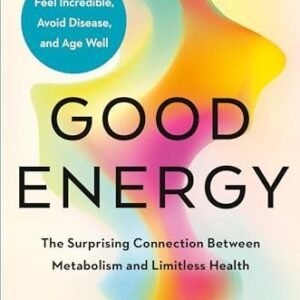In a world where the hustle and bustle of daily life often overshadow the subtle cues of our health, the quest for vitality takes centre stage. As we navigate through myriad wellness trends and dietary fads, one essential nutrient remains a silent yet powerhouse player in our overall well-being: iron. This humble mineral, often overlooked, is a cornerstone of energy production, immune function, and cognitive clarity. Without sufficient iron, our bodies can feel like a finely-tuned engine running on empty—struggling to perform at its best, sapped of vigor, and vulnerable to a host of health challenges. In this article, we delve into the vital role iron plays in sustaining life, exploring its implications not just on physical health, but on mental resilience and emotional balance as well. Join us as we unlock the secrets of iron, illuminating its importance in achieving not just survival, but a thriving, energetic existence.
Table of Contents
- Understanding Iron’s Impact on Energy Levels
- Identifying Iron Deficiency: Symptoms and Risks
- Natural Sources of Iron: Nourishing Your Body
- Optimizing Iron Intake: Tips for a Balanced Diet
- To Wrap It Up
Understanding Iron’s Impact on Energy Levels
Iron is not just another mineral; it is a fundamental element that plays a pivotal role in our daily energy production. At the core of our vitality lies hemoglobin, the protein in red blood cells responsible for transporting oxygen throughout the body. When our iron levels are optimal, our bodies can efficiently convert food into energy, enabling us to feel revitalized and alert. Inadequate iron levels can lead to fatigue, weakness, and even a sense of lethargy, creating a cycle that hinders both physical and mental performance. Ensuring sufficient iron intake through diet or supplementation can help restore energy levels and enhance overall well-being.
The link between iron and energy levels can be further understood through the following points:
- Oxygen Transport: Adequate iron supports the effective transport of oxygen to tissues and organs.
- Metabolic Function: Iron is vital for various enzymatic processes that generate energy within cells.
- Immune Support: Healthy iron levels bolster immune function, thus reducing the risk of fatigue associated with infections.
To illustrate the dietary sources of iron and their contribution to energy levels, consider the table below:
| Food Source | Iron Content (mg per 100g) |
|---|---|
| Red Meat (Beef) | 2.6 |
| Spinach (Cooked) | 3.6 |
| Lentils (Cooked) | 3.3 |
| Chickpeas (Cooked) | 2.9 |
Identifying Iron Deficiency: Symptoms and Risks
Iron deficiency manifests through a range of physical and psychological symptoms that can significantly impact daily life. Individuals may experience fatigue and weakness due to decreased red blood cell production, leading to insufficient oxygen transport throughout the body. Other telltale signs include:
- Pale skin or paleness in the inside of the lower eyelids
- Brittle nails that break easily
- Shortness of breath during physical activity
- Dizziness or lightheadedness upon standing
- Cold hands and feet due to impaired circulation
Tackling iron deficiency is crucial not only for physical well-being but also for mental health. Insufficient iron levels can lead to cognitive impairments, such as difficulty concentrating or a lack of motivation. The risks associated with untreated iron deficiency extend beyond individual health; they can affect productivity and overall quality of life. Key risks include:
- Increased susceptibility to infections due to compromised immune function
- Higher risk of complications during pregnancy and childbirth
- Potential development of iron-deficiency anemia, a more severe condition
Natural Sources of Iron: Nourishing Your Body
When it comes to replenishing iron levels in our body, nature provides a bountiful selection of sources. In addition to supplements, incorporating foods rich in iron into our diet can significantly enhance overall health. Animal-based sources, known as heme iron, are particularly beneficial for absorption and include:
- Red meat: Beef and lamb are excellent choices, packed with easily absorbable iron.
- Poultry: Chicken and turkey offer a leaner option for iron without excess fat.
- Fish: Varieties like salmon and tuna not only provide iron but also essential omega-3 fatty acids.
However, it’s essential to remember that plant-based sources, despite containing non-heme iron, still contribute significantly to our iron intake. Pairing these foods with vitamin C-rich items can further enhance absorption. Consider incorporating the following into your meals:
- Dark leafy greens: Spinach and kale are rich in iron and versatile in dishes.
- Legumes: Beans, lentils, and chickpeas are packed with protein and iron.
- Nuts and seeds: Almonds and pumpkin seeds are great snacks that also boost iron levels.
| Food Source | Iron Content (mg per 100g) | Type |
|---|---|---|
| Beef | 2.6 | Heme |
| Spinach | 2.7 | Non-Heme |
| Lentils | 3.3 | Non-Heme |
| Chicken | 1.0 | Heme |
Optimizing Iron Intake: Tips for a Balanced Diet
To ensure your body receives sufficient iron, it’s essential to integrate a variety of iron-rich foods into your meals. Including both heme and non-heme sources can help balance your iron intake effectively. Heme iron, found in animal products, is more easily absorbed than non-heme iron from plant sources. To maximize absorption, consider pairing non-heme iron foods with a source of vitamin C, such as citrus fruits, strawberries, or bell peppers. This not only enhances the body’s ability to absorb iron but also adds vibrant flavors to your dishes.
Here are some invaluable tips for optimizing your iron intake:
- Variety is Key: Incorporate diverse sources of iron such as lean meats, beans, lentils, tofu, spinach, and fortified cereals.
- Cooking Techniques: Use cast iron cookware, as it can increase the iron content of your food.
- Mind Your Beverages: Limit tea and coffee during meals, as tannins can inhibit iron absorption.
- Look for Fortified Options: Many cereals and grains are fortified with iron; check labels for options that suit your diet.
To better understand the iron content in various foods, check the following table:
| Food Item | Iron Content (mg per serving) |
|---|---|
| Red Meat (3 oz) | 2.7 |
| Chicken (3 oz) | 1.0 |
| Spinach (1 cup cooked) | 6.4 |
| Lentils (1 cup cooked) | 6.6 |
| Fortified Cereal (1 cup) | 18.0 |
To Wrap It Up
the journey to vitality is often paved with the silent strength of iron. This essential mineral not only fuels our physical well-being but also weaves through the intricate tapestry of our health, energizing every cell and supporting our innate resilience. As we have explored, understanding the pivotal role of iron can empower us to make informed dietary choices, embrace a balanced lifestyle, and ultimately unlock the robust energy that lies within us.
As we forge ahead in our quest for wellness, let us acknowledge iron’s multifaceted contributions and delve deeper into our nutritional habits. Whether through vibrant foods or mindful supplementation, each step taken is a stride toward greater vitality. Remember, in the symphony of health, iron is not just an element; it is a vital note resonating within us all. Embrace it, cherish it, and let it guide you on the path to a more invigorated life.





